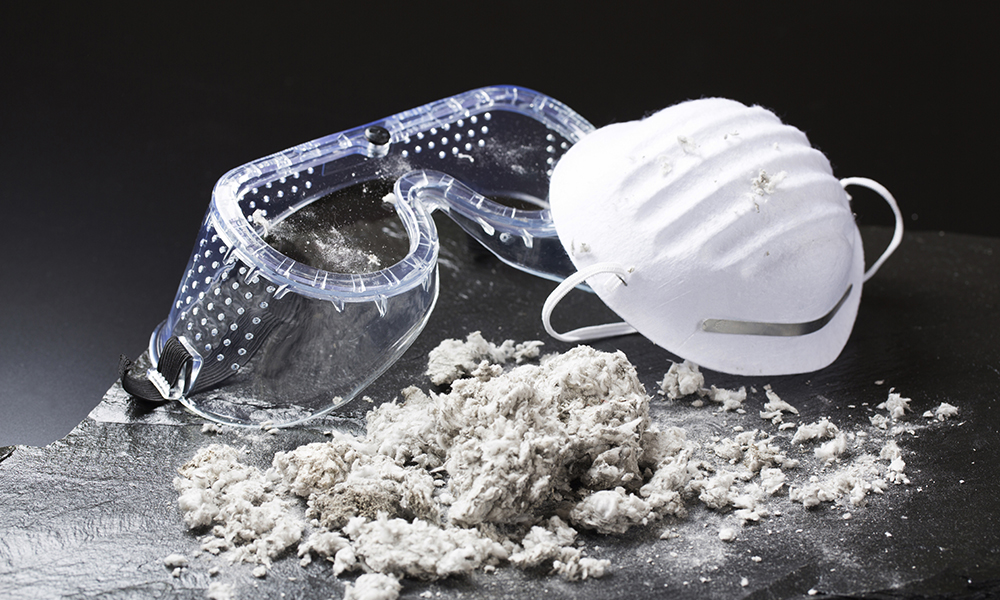Why insulating ourselves from asbestos is still a challenge
Anthesis’ Charles Faulkner discuses whether asbestos materials can make their way into company supply chains

The World Health Organisation (WHO) estimates that globally, 107,000 people die every year as a result of exposure to Asbestos. Breathing in the microscopic particles of Asbestos dust causes respiratory diseases that are extremely debilitating, painful and in nearly all cases fatal. There is no known cure for Asbestos-related disease.
The import, manufacture and use of Asbestos has been prohibited in the United Arab Emirates (UAE) since November 2006. Similar Asbestos bans exist in the rest of the Gulf Cooperation Council (GCC) countries, however they don’t exist in the GCC’s neighbouring countries.
Asbestos is only banned in around one third of the world’s countries, most of which are in Europe. Vast quantities of Asbestos are still mined, refined, and turned in to Asbestos Containing Materials (ACMs) in the remaining two-thirds of the countries around the globe. According to the United States Geological Survey (USGS) the biggest remaining active Asbestos mines are located in Russia and Kazakhstan, but it is the countries where the manufacturing of Asbestos products takes place that are of more concern for the GCC. China and India manufacture and export thousands of tonnes of ACMs each year, the majority of which are utilised in the construction industry.
With a quick online search, it is possible to purchase a plethora of Asbestos materials from the aforementioned countries at rock-bottom prices. From gaskets to insulations, roof sheeting to ceiling tiles; all can easily be purchased by the kilogram or square meter in never-ending quantities. Sometimes the purchaser may be unaware of what they are buying as the marketing of these ACMs has become more sophisticated in recent years.
Sellers make impossible claims such as ‘Dust Free Asbestos’ and in certain circumstances they substitute or remove the word ‘Asbestos’ altogether. ‘Asbestos cement’ is now sold as ‘fiber cement’ and ‘compressed Asbestos fiber gaskets’ are now just ‘CAF gaskets’. Counterfeit materials are also commonplace, so any guarantee of ‘Asbestos Free’ or ‘Non-Asbestos’ should be treated with a degree of scepticism.
Although banned by legislation and prohibited under the various green building regulations, Asbestos is still making its way onto construction sites and into buildings in the Middle East. Occasionally this is reported in the local national newspapers, however more often than not it goes undetected due to a general lack of awareness and the unscrupulous marketing tactics of Asbestos producing companies.
An On-Going Challenge
Over the past 12 years, I have encountered a large number of newly constructed buildings that have had Asbestos installed in them – some as recent as 2021. Additionally, I have received numerous phone calls from individuals requesting where they can purchase ACMs (most commonly Asbestos cement pipework, roof sheeting, Asbestos gaskets, and insulations).
Although these phone calls still are met with incredulity, they point to a wider concern. For many people within the construction industry the health hazards associated with Asbestos are still not well known, neither is the legal status of this hazardous material. There is still a demand, and without looking too hard there is also still a supply.
Problems associated with the removal of Asbestos materials once they have been installed in a new/retrofitted building are of a different order of magnitude than if they have been delivered to a site and construction has not yet commenced. The time and costs associated with the identification (consider the needle in a haystack scenario of finding Asbestos gaskets installed into a new power station) and removal of Asbestos materials from a building can be eye-watering in comparison to eliminating the risk before construction.
Regulators and local enforcing authorities have done an excellent job at prohibiting these materials through various bans and through the requirements set out in green building regulations, but what can be done by construction industry stakeholders to completely eliminate the possibility of Asbestos being installed in their sites?
Tackling the Problem
First and foremost, at the procurement stage, Asbestos must be contractually prohibited by all relevant parties involved in both construction and maintenance works. Reference should be made to relevant legislation and local building codes, and it should be clearly stated that Asbestos is a banned material and must not be used.
Reviews and desktop audits of material and equipment specifications should be carried out to reduce the risk of Asbestos being brought on to a new construction site. Onsite audits and inspections of building materials brought on to a site should be carried out by competent and trained professionals. Such inspections should be accompanied by bulk sampling and analysis for Asbestos content, to prove that materials are in fact ‘Non-Asbestos’.
The expense of having a professional Asbestos consultant sample and analyse a few bulk materials, pre-construction, pales into insignificance in comparison to the disruption, reputational risk and legal ramifications that could arise from an Asbestos abatement project in a brand-new building. Raising Asbestos awareness and the risk posed by this material to relevant stakeholders must be a focus for developers, contractors, and consultants.
In those buildings that are to be retrofitted, refurbishment Asbestos surveys (formerly known as type 3 Asbestos surveys) should be completed, and in the event that Asbestos removal is required, this should only be conducted by trained professionals under the supervision of qualified, competent and registered Asbestos Supervising Consultants (ASCs).
Only by collectively acknowledging the ongoing risk Asbestos presents in the construction industry, can we take effective action to reduce the death toll caused by this deadly material.













